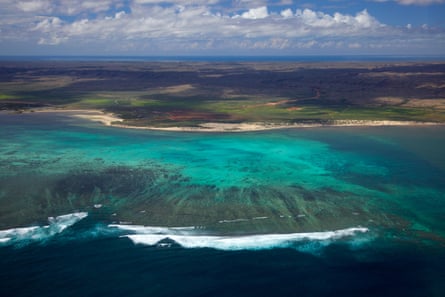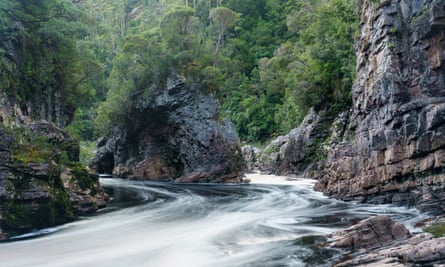
When it comes to paddling destinations, Australia has an embarrassment of riches: there’s a coastline that stretches for about 34,000 km, easily accessible waterways for beginners and world-class rapids for thrill-seekers.
Rohan Klopfer, head instructor for Melbourne-based East Coast Kayaking, says Australia is a “bucket list destination” for international paddlers. And whether you’re canoeing, kayaking or rafting, travelling on the water allows you to load up with more gear than hikers or cyclists, making multi-day trips significantly more comfortable.
Social media and increasingly affordable equipment have made paddling more visible and accessible in recent years, but Klopfer cautions that rivers, oceans and lakes need to be treated with respect. Prospective paddlers should master the fundamental skills (Paddle Australia runs a range of accredited courses), ensure they have the right gear and check the forecast before setting out.
January
Freycinet Peninsula, Tasmania
The long days of summer coincide with Tasmania’s high season, but to escape the crowds at Wineglass Bay, simply take to the water on the Freycinet’s sheltered west coast. An unforgettable landscape awaits: turquoise bays, white-bellied sea eagles diving for fish, slopes covered in unbroken eucalypt woodland and pink granite summits that sparkle in the sunlight. If you want to extend your trip beyond a day paddle, it’s possible to get even further off the beaten track by crossing the 1.6km channel that separates the Freycinet Peninsula from gorgeous Schouten Island.
February
Sydney Harbour, New South Wales
The city harbour has more than good looks going for it – it’s also “perfect for paddling”, says Klopfer. “It’s got lots of lee and little fetch, which means there are plenty of sheltered nooks and crannies and fairly small waves.” There are dozens of places to put in around the harbour. You can follow the coast to view the Harbour Bridge and Opera House from different vantage points, or picnic on one of the 13 islands dotting the harbour (be warned, some have a $7 landing fee). For a quieter paddle, follow a peaceful north-east arm of Middle Harbour up through the rocky coastline and thick bushland of Garigal national park.

March
The Coorong, South Australia
Autumn, with its mild days and light winds, is an ideal time to canoe through the saltwater lagoons near the Murray Mouth. It’s also the last chance to see migratory waders like bar-tailed godwits and red-necked stints before they set off for the Arctic Circle. Multi-day trips are made easy, thanks to several boat-only campsites on the sand dunes of the narrow Younghusband Peninsula, that separate the sheltered lagoon from the wild Southern Ocean to the west.

April
Bass Strait, Victoria
The Bass Strait is a must for expert-level paddling enthusiasts, says Klopfer, who calls the two-week crossing “the Everest of the ocean”. In fact, it’s a lot less crowded than the world’s highest peak. Every April, when the weather is most stable, fewer than 50 paddlers make the 320km crossing. For a more achievable alternative, Klopfer recommends paddling around Cape Woolamai on Phillip Island. “You get a taste of true sea kayaking when you poke out into Bass Strait, and it’s quite remote so the scenery is spectacular with tall cliffs, caves and plenty of sea life.”
May
Ningaloo Reef, Western Australia
April to October is whale shark season at Ningaloo Reef, but there’s plenty to see beyond the headline attraction. Ningaloo is far more accessible for kayakers (and snorkellers) than the Great Barrier Reef, and because it lies just offshore, the fringing reef creates a lagoon of calm, clear water. Eagle-eyed paddlers might spot dolphins, dugongs and surfacing turtles, but it’s worth keeping a snorkel on hand to explore the coral gardens that teem with rays, reef sharks and rainbows of fish.

June
Murray River, New South Wales, Victoria, South Australia
It takes several months to paddle the length of Australia’s longest river, which flows for 2,500km from source to sea, but there are plenty of stretches that lend themselves to shorter paddles. The main channel is flanked by backwaters and anabranches that can be easily explored on a day trip from towns including Albury and Renmark. Once the current water levels subside, the winter months will be ideal to explore the Murray – there are fewer boats and jetskis sharing the water and later sunrises make it easier to get on the water to catch them, while a beautiful blanket of mist covers the river’s glassy surface.
July
Tully River, Queensland
“Internationally, the Tully River has a really good reputation because it’s quite a boisterous, technical river,” says Canoe Safaris co-owner Phil Collins, who has spent more than two decades paddling his way across the world. Located south of Cairns, the river hosted scores of international paddlers at the 2019 World Rafting Championships. It alternates between short stretches of calm water and almost 50 foaming rapids as it descends 12km through World Heritage-listed rainforest. Because the river is fed by a dam it’s raftable year-round, but Queensland’s dry season is a particularly appealing time to tackle it.
August
The Whitsundays, Queensland
This group of 74 islands is the quintessential tropical paradise. The best way to see it is on the Ngaro Sea Trail, a network of walks and sea kayaking routes connecting some of the most beautiful spots in the archipelago. The crossing out to Whitsunday Island is quite challenging, but it’s possible to get a boat transfer to Whitehaven beach and work your way up the island’s east coast over several days, leaving plenty of time to snorkel, fish and hike in the afternoons. Visit between June and September, and you might even see a pod of whales swimming alongside you.

September
Katherine River, Northern Territory
The rocks of Nitmiluk Gorge are streaked with plastic from the thousands of backpackers who have hauled their kayaks over the gruelling portages, but downstream the river opens up to offer a more relaxing paddle. As water becomes scarce late in the dry season, bird and animal life becomes more concentrated around the riverbanks, and a canoe is the perfect way to get up close without disturbing the peace. The water also contains some more menacing wildlife, so it’s best to go with a guide who knows the area – and its resident crocodiles.
October
Noosa River, Queensland
Nicknamed the “river of mirrors”, this serene stretch of inland water is an excellent choice for paddlers contemplating their first overnight trip. Most people start at Lake Cootharaba, warming up with a 4.5km lake crossing before entering a waterway flanked by mixed melaleuca and casuarina forest. As you continue upstream, the banks close in and the river’s smooth surface reflects the overhanging foliage and sky above. For a peaceful experience, stick to its upper stretches, where motorboats are restricted.
November
Franklin River, Tasmania
The Franklin River is a place of wild natural beauty – and the site of Australia’s most famous environmental protests. Slicing through Tasmania’s remote south-west, it courses through slot canyons, rainforest and rapids with fearsome names like Nasty Notch, Log Jam and The Cauldron. Rafting the entire river usually takes a little over a week, and travelling at the end of spring means you can avoid the lengthy portages created by low water levels in summer. Once you set off, you’re at the river’s mercy so it should only be rafted with a highly experienced guide. But your reward? Total immersion in one of the world’s great wilderness areas.

December
Glenelg River, Victoria
Collins nominates this river near the Victoria-South Australia border as one of his favourite Australian paddles. The flat water is suitable for beginners, and the seven paddler-only campsites along the 75km canoe trail , he says, are “really well set up for a three-day journey that’s the perfect combination of native Australian bush with a river trip”. The stalactite caves provide an excuse to get out and explore the landscape on foot, but Collins says the best views are from the water. “There are fantastic vertical cliffs just off the river and when you look down the gorge, all you can see is the odd holiday home poking out of the bush.”



